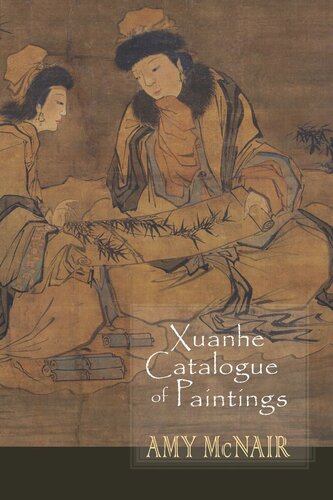

Most ebook files are in PDF format, so you can easily read them using various software such as Foxit Reader or directly on the Google Chrome browser.
Some ebook files are released by publishers in other formats such as .awz, .mobi, .epub, .fb2, etc. You may need to install specific software to read these formats on mobile/PC, such as Calibre.
Please read the tutorial at this link: https://ebookbell.com/faq
We offer FREE conversion to the popular formats you request; however, this may take some time. Therefore, right after payment, please email us, and we will try to provide the service as quickly as possible.
For some exceptional file formats or broken links (if any), please refrain from opening any disputes. Instead, email us first, and we will try to assist within a maximum of 6 hours.
EbookBell Team

4.4
12 reviewsXuanhe Catalogue of Paintings is the first complete translation of the well-known document produced at the court of Emperor Huizong (r. 1100–1125). Dated to 1120, the Catalogue is divided into ten categories of subject matter. Under Daoist and Buddhist Subjects, Figural Subjects, Architecture, Barbarian Tribes, Dragons and Fish, Landscape, Domestic and Wild Animals, Flowers and Birds, Ink Bamboo, and Vegetables and Fruit are biographies of 231 painters, ranging from famous early masters, such as Wu Daozi (ca. 685-758) and Li Cheng (919-967), to otherwise unknown artists of the Song-dynasty court, including fourteen eunuch officials and sixteen male and female members of the royal family. Titles of their pictures held in the palace collection are listed for each artist. These 6,396 paintings testify to the visual culture experienced by viewers of the twelfth century. The author's Introduction analyzes the Catalogue as a source of evidence about the formation of the Song-dynasty palace collection and argues that the majority of its pictures were already in the collection before Huizong's reign, as a result of conquest, confiscation, tribute, gift culture, collecting by earlier emperors, and the production of academy artists and regular officials at the Song court. Under Huizong's reign, around a thousand other pictures were added to the Catalogue through acquisition and reattribution.
Open access edition funded by the National Endowment for the Humanities.